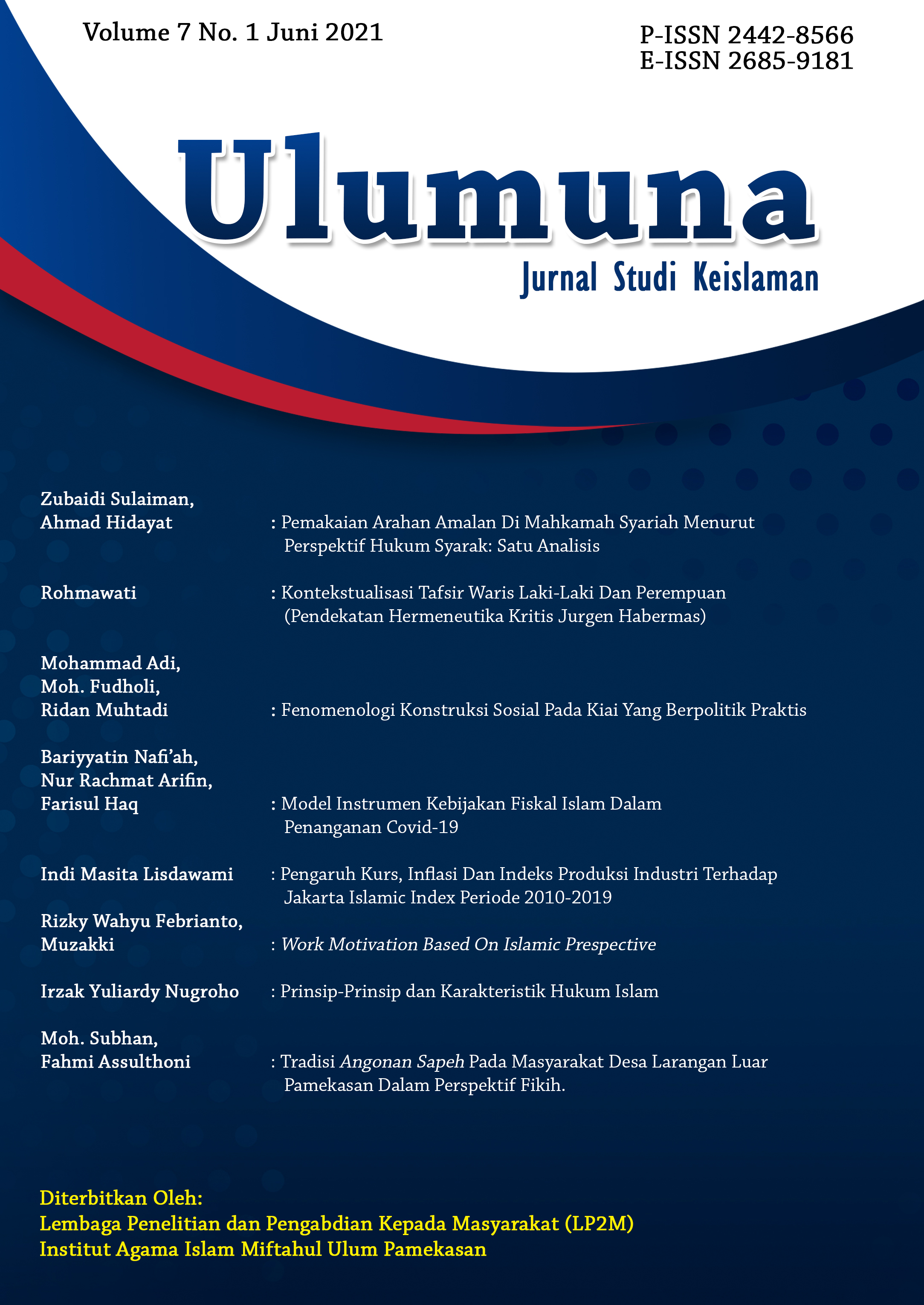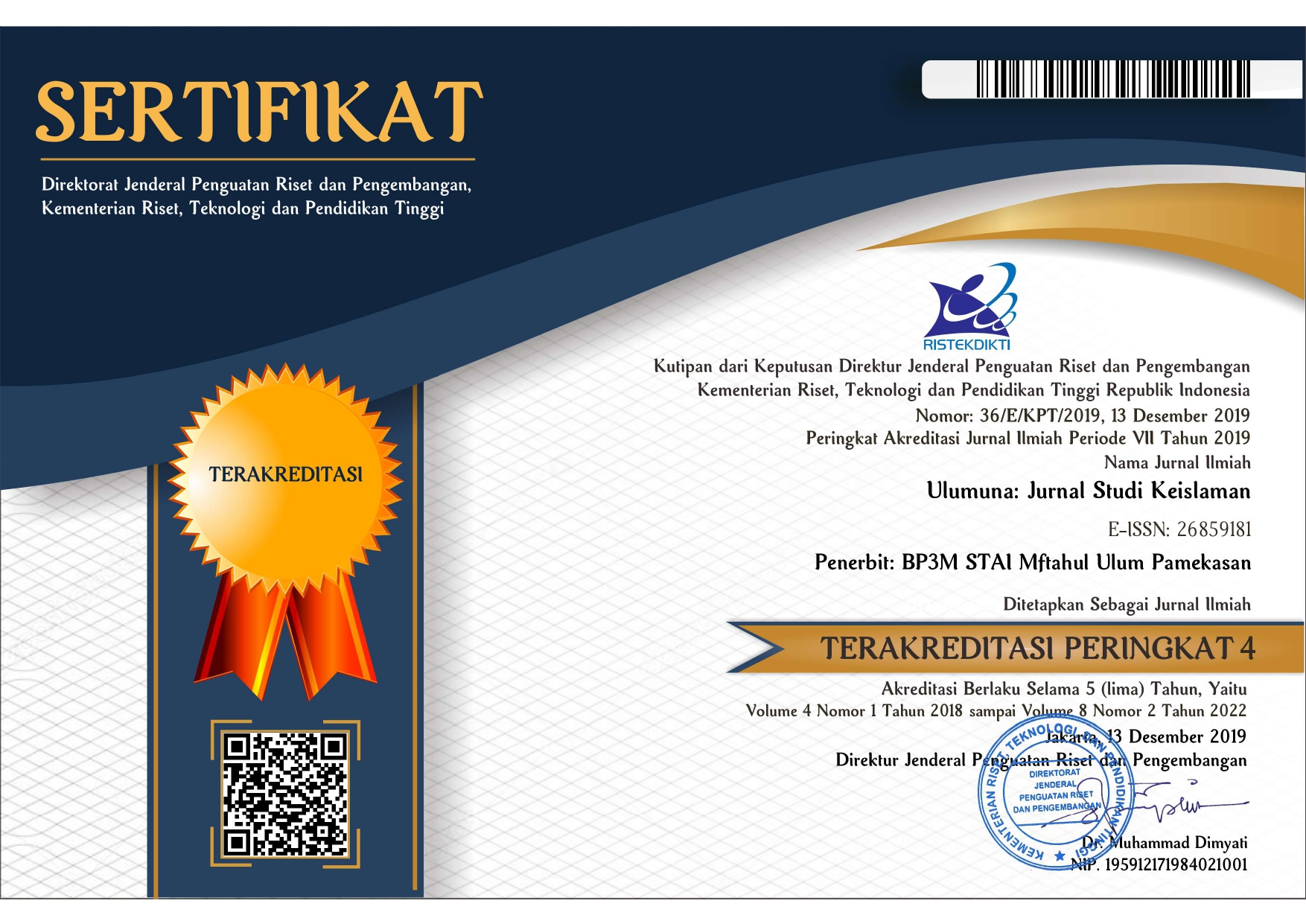KONTEKSTUALISASI TAFSIR WARIS LAKI-LAKI DAN PEREMPUAN
(Pendekatan Hermeneutika Kritis Jurgen Habermas)
DOI:
https://doi.org/10.36420/ju.v7i1.4922Abstract
This paper examines the contextualization of interpretations of male and female inheritance using the critical hermeneutic approach of Jurgen Habermas. The idea of ​​critical hermeneutics developed by Habermas seeks to link the interpretation of religious texts with poverty problems such as oppression, injustice, and gender discrimination. The characteristics of Habermas’ ideas on critical hermeneutics put subjects involving in the communication into parallel, coexistent, and dominance-free positions. The interest of text users is stored within the text. Thus, despite interpreter’s horizon, text should be suspected. This is necessary to be done in analyzing Islamic sciences since the proposed concepts could be utilized to reveal the interest or ideology behind the domination of interpretation. Habermas believed that the combination of hermeneutics, emancipatory reflection and analytical knowledge could provide a new basis on critical theory yet setting critical limits on social science absolutism. The dominant interpretation distinguishing men and women in inheritance (2:1) as stated in Q.S. al-Nisa’ verse 11 can be critically reinterpreted according to the text and context on behalf of human liberation from discrimination and injustice orientation.Downloads
Published
2021-06-15
How to Cite
Rohmawati, R. (2021). KONTEKSTUALISASI TAFSIR WARIS LAKI-LAKI DAN PEREMPUAN: (Pendekatan Hermeneutika Kritis Jurgen Habermas). Ulumuna: Jurnal Studi Keislaman, 7(1), 20–38. https://doi.org/10.36420/ju.v7i1.4922
Issue
Section
Articles
License
Copyright (c) 2021 Rohmawati

This work is licensed under a Creative Commons Attribution-ShareAlike 4.0 International License.
Jurnal ini terbuka untuk umun dan bisa digunakan untuk kepentingan ilmiah lainnyaÂ







